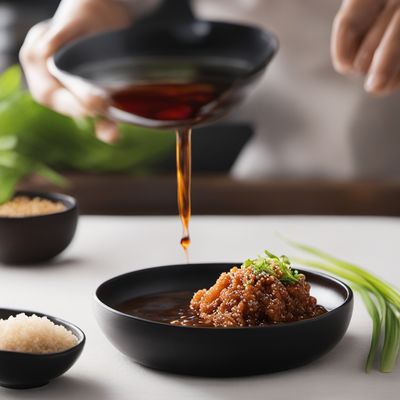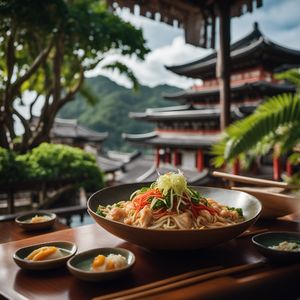
Dish
Aburaage
Aburaage is made by deep-frying thin slices of tofu until they are crispy and golden brown. The tofu is then pressed to remove excess oil and cut into small pieces. Aburaage has a slightly sweet and savory flavor and a chewy texture. It is often used as a filling for inari sushi, a type of sushi that is made by stuffing aburaage pockets with sushi rice. Aburaage can also be used as a topping for udon or soba noodles, or as a filling for bento boxes.
Origins and history
Aburaage is believed to have originated in China and was introduced to Japan during the Nara period (710-794). It was originally used as a food preservation method, as the deep-frying process helped to extend the shelf life of the tofu. Over time, aburaage became a popular ingredient in Japanese cuisine and is now used in a variety of dishes.
Dietary considerations
Aburaage is a good source of protein and is low in fat and calories. It is also gluten-free and suitable for vegetarians and vegans.
Variations
There are many variations of aburaage, including those that are stuffed with vegetables or meat. Some recipes also call for the aburaage to be marinated in a sweet and savory sauce before being used in dishes.
Presentation and garnishing
Aburaage is typically served on a small plate or as a topping for noodles or sushi rolls. It can be garnished with sliced green onions or sesame seeds for added flavor and texture.
Tips & Tricks
To prevent the aburaage from becoming too oily, it is important to press it firmly after deep-frying to remove excess oil. It is also important to use fresh oil for frying to ensure that the aburaage has a crispy texture.
Side-dishes
Aburaage is often served with a variety of dipping sauces, including soy sauce, ponzu sauce, or a mixture of soy sauce and mirin. It can also be used as a topping for salads or as a filling for sandwiches.
Drink pairings
Aburaage pairs well with a variety of drinks, including green tea, sake, and beer. A cold glass of beer is a popular choice among locals.
Delicious Aburaage recipes
More dishes from this category... Browse all »

A-gei
Taiwanese cuisine

Abará
Brazilian cuisine

Acciughe sotto pesto
Italian cuisine

Accra
West African cuisine

Aggala
Indian cuisine

Airplane Olive
Greek cuisine

Alaisa fa'apopo
Samoan cuisine

Alcapurria
Puerto Rican cuisine




